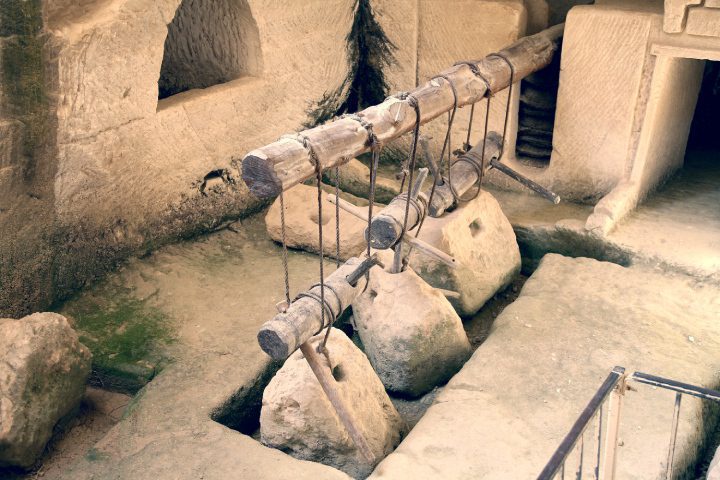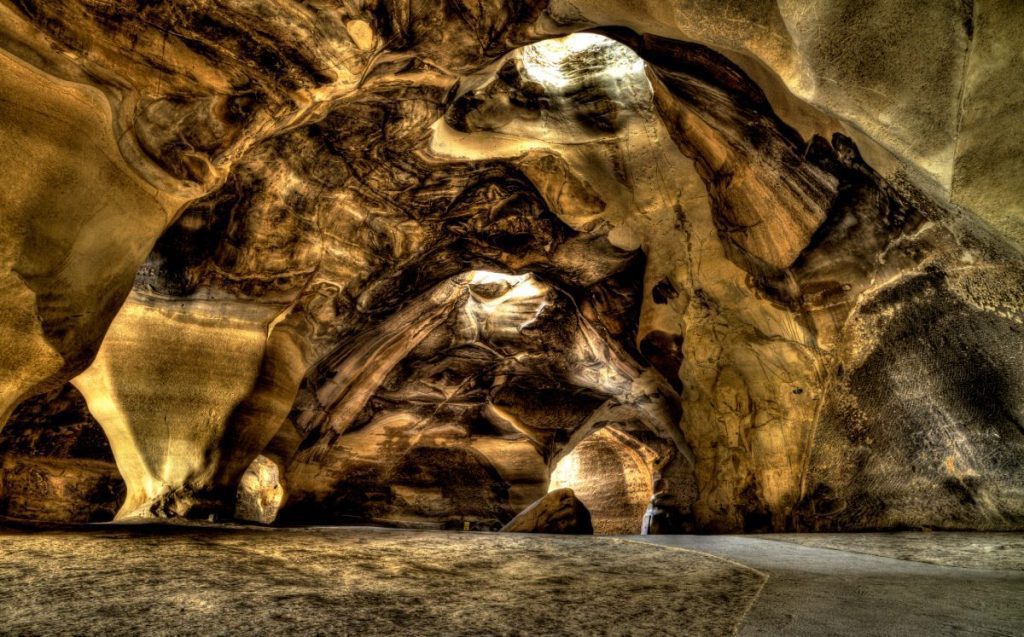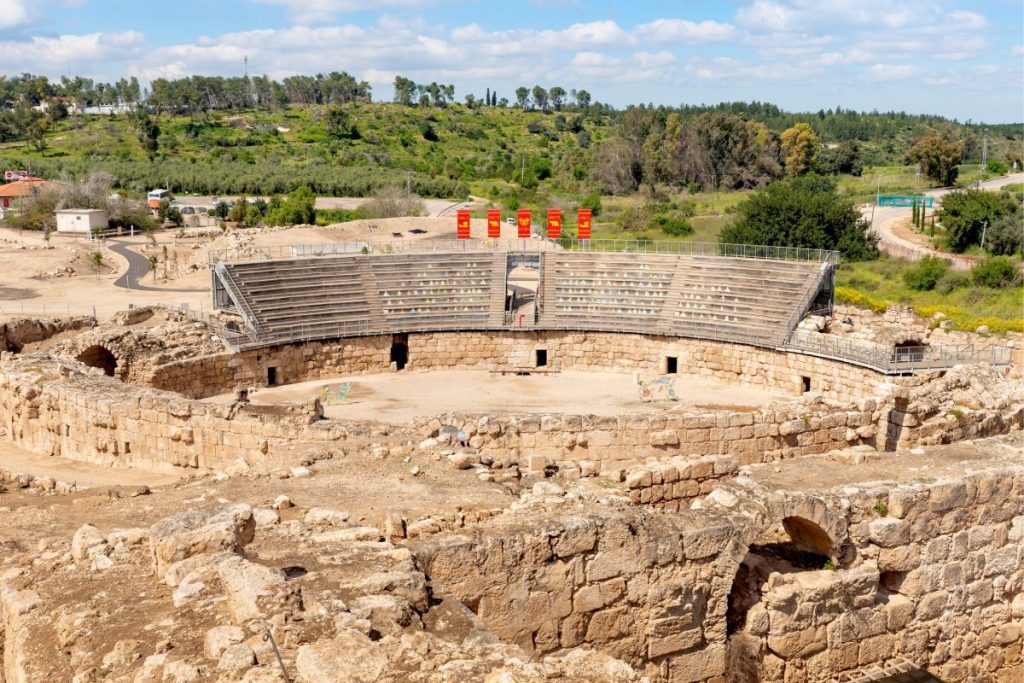Beit Guvrin National Park is a national park and an important archaeological site that preserves the ruins of the ancient city of Tel Maresha and the caves of Beit Guvrin. Situated about eight miles from Kiryat Gat in southern Israel, the vast park is a UNESCO World Heritage Site and boasts an array of fascinating archaeological artifacts and ruins including a Roman-Byzantine amphitheater; a large Jewish cemetery; a Byzantine church; burial caves; and public baths.

History and Archeology in Beit Guvrin National Park
The ancient city of Maresha dates back to the First Temple period when it was an important town of Judah. It had a tumultuous history; being destroyed in 112 BCE, and again 40 BCE; and was later renamed Eleutherolis during the Roman and Byzantine eras. A city of freemen, Eleutherolis had a large Jewish population and was very prosperous until the Bar Kochva Revolution in 135 BC. Archeological excavations of the site at Beit Guvrin National Park have unearthed a fascinating array of artifacts from the Roman civilization; such as an amphitheater and beautiful Roman mosaics; as well as several churches including Saint Anne’s.
Photos In Beit Guvrin National Park

Don’t miss the chance to join a real archaeological dig and find your own treasures. The park hosts a special archaeology program where visitors can join an authentic archaeological dig for a day on a real excavation site and help in the search for ancient artifacts.
Interesting Things to See at Beit Guvrin National Park
Beit Guvrin National Park has many extraordinary remains and ruins to explore from an ancient columbarium (a pigeon breeding facility); dating back to 200 BC to a spectacular Roman amphitheater that could seat 3,500 people and is one of only four in Israel. The Christian St. Anne’s Church hails from the Byzantine era but was later renovated by the Crusaders in the 1100s and its impressive high semi-circular domed stone structure can still be seen today. Beautifully preserved Byzantine mosaics depicting birds and animals were also discovered in the park.
Beit Guvrin Caves
One of Beit Guvrin National Park’s most popular attractions is the burial caves at Beit Guvrin. The caves were once the family tomb of Beit Guvrin’s Sidonian leader, Apollophanes; and were later used as burial caves by the Greek and Edumite inhabitants of Beit Guvrin.
So it is thought the caves were formed between the 4th to 9th centuries when the chalky limestone was quarried to make roads; plaster; and mortar. In fact, there are about 2,000 caves in the area; the most fascinating of which are the bell caves; which have sheer; smooth beige-colored limestone walls; and completely rounded interiors. Also, there are around 800 Bell Caves in the park; many of which are connected via an underground network of passageways, some measuring over 60 feet in height.

Some of the bell caves have well-preserved paintings depicting real and mythical animals like a three-headed dog, a cock, and a bright red phoenix. On my private tour of Beit Guvrin that I offer I like to take my guests to see some secret caves I know.
Caving in the Area
In the area, there are some wonderful places you can do some caving. One great example is Luzit Cave; that are very similar in nature. In other words, they are also bell-shaped caved but not open to the general public. But with the assistance of a certified private tour guide, I can bring you down there and we can explore them together! Sone thing that I truly enjoy! Also, did you know that an inscription of a Roman soldier was found there; from the time of the 2nd Jewish Revolt! On my guided tours of the Beit Guvrin, we can crawl through narrow shafts and caves and turn this day into a real adventure!
Beit Guvrin National Park Details:
Entry Fees: Adult 28 NIS, Child 14 NIS, Student 24 NIS.
Landline Phone: (00)972(0)86811020
Opening Hours:
Summer: Sun-Thu, Sat 08:00-17:00, Fri 08:00-16:00;
Winter: Sun-Thu and Sat 8:00-16:00, Fri 08:00-15:00

